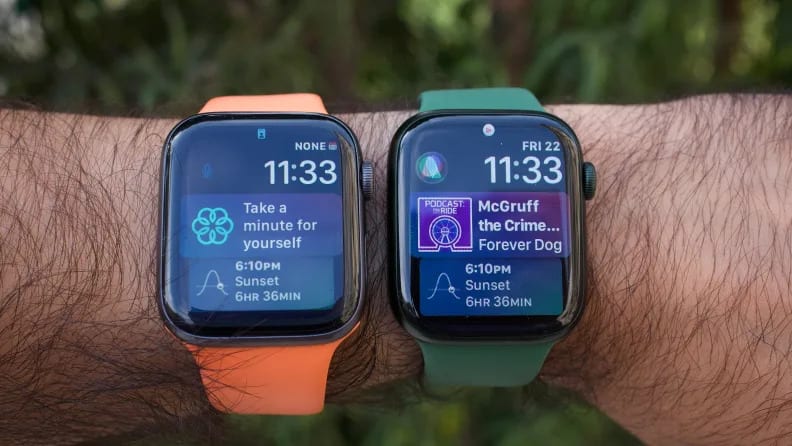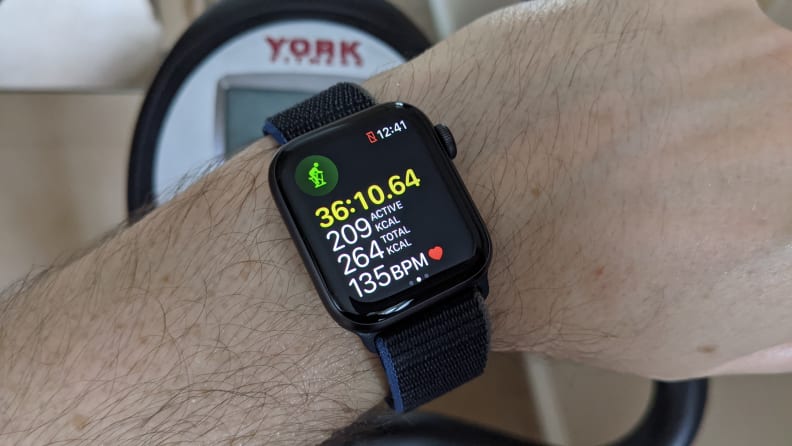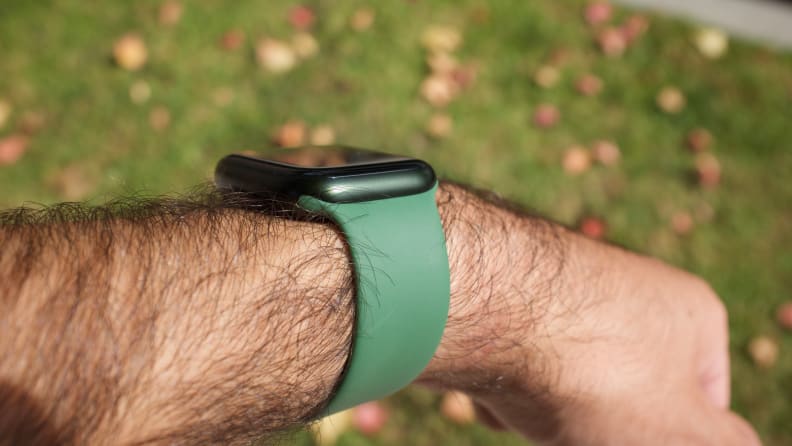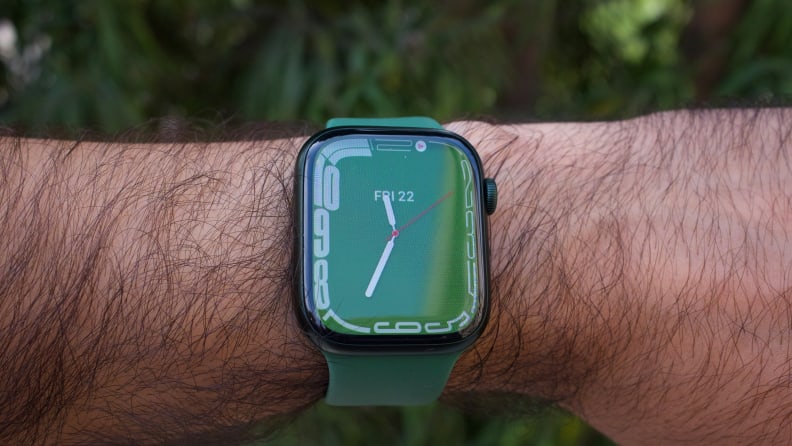Apple Watch Series 7 vs SE: Which one should you buy?
Here's how to pick the right Apple Watch for your wrist.
 Credit:
Reviewed / Jordan McMahon
Credit:
Reviewed / Jordan McMahon
Products are chosen independently by our editors. Purchases made through our links may earn us a commission.
Picking the right Apple Watch can be tricky. There are a few models to choose from, and they have a lot in common. But there are still some important differences between those models, and it's worth taking a second to figure out which device will suit you best before hitting that buy button.
Whether you're concerned with the latest and greatest in health metric tracking, or you're just looking for the most cost-effective way to peep your notifications from your wrist, there's an Apple Watch for you. Here's how the Apple Watch Series 7 and the Apple Watch SE stack up.
Get the Apple Watch Series 7 Get the Apple Watch SE
Price
The most immediately noticeable difference between the Series 7 and the SE is the price. The Series 7 starts at $400 for the 41mm aluminum model with GPS and no cellular connection and goes up to $750 for a 41mm stainless steel model with GPS and no cellular connection. Meanwhile, the Apple Watch SE starts at $280 for a GPS-only model and goes up to $330 for GPS and cellular.
You'll get more for your money with the Series 7 (more on that later), but it's still $120 more than the SE. If you're looking for the best bargain, the SE with GPS is tough to beat.
Our pick: Apple Watch SE
Fitness and health tracking

The Apple Watch SE offers great fitness tracking features
The Apple Watch Series 7 is packed with a few more health-tracking features than the SE: It can measure your blood oxygen levels, as well as run an electrocardiogram (ECG) to measure your heart's rhythm. The SE can't do either, but, again, it's also significantly cheaper.
On the other hand, both watches can notify you of high or low heart rates or irregular heart rhythms, and they both support fall detection and cycle-tracking. Both watches are also water-resistant up to 50m, so you should be fine taking it for a swim, and they both support Apple Fitness+ for workouts.
Before deciding whether those extra features are worth it for you, it's worth noting that even Apple acknowledges is meant for fitness and wellness tracking, not for full-on health assessments. That doesn't mean they don't have any value (you can use the tracking to spot trends over time), but you shouldn't spend a couple hundred bucks extra hoping for this to replace consultations with your doctor.
Our pick: Apple Watch Series 7
Connectivity

Unless you're in direct sunlight, it's hard to distinguish the green casing from the black option.
Both the SE and the Series 7 have GPS and GPS+Cellular options, with 802.11b/g/n 2.4GHz Wi-Fi and Bluetooth 5.0. You'll have to pay your carrier an extra monthly fee to connect your watch to their network (usually about $10/month), though.
Our pick: Tie
Display

The Contour watch face looks nice, but it's exclusive to the Series 7.
The Series 7 has a slightly bigger display, with 45mm and 41mm models available, while the SE's display comes in 44mm and 40mm models. The extra millimeter on the Series 7 models (which makes the Series 7's display about 20% bigger than the one on the SE) lets the display stretch out to the edges of the watch's chassis, and creates a sort of wrap-around effect that looks pretty nice—especially with Apple's custom watch faces designed for the new screens.
The Series 7 also features an always-on display that can keep the time on the screen, even when you're not using the watch. The SE, on the other hand, only turns on the display when you tap it or raise your wrist to interact with it. That works fine, but the convenience of being able to peep your wrist without having to make any sort of motion is quite nice.
That said, the SE's display is still perfectly fine. It's still big enough to view texts or even maps, and you're only really missing out on a few nice-looking watch faces. Everything else still looks great on the SE's screen, which has a resolution of 368 x 448 pixels, compared to 396 by 484 on the Series 7.
Our pick: Apple Watch Series 7
And the winner is...
The Series 7 is technically the winner here. It has some key features that give it an edge over the SE, but it’s much more expensive. Its bigger, always-on display is also easier on your eyes, and the additional health-tracking features can be handy.
Still, that's no reason to ignore the SE. Despite its lower price, it offers nearly every important feature you can get on the Series 7, in a slightly smaller package. Sure, you might not be able to track your blood oxygen levels or use the new, exclusive watch faces Apple designed for the Series 7, but that should be fine for most people.
Ultimately, it comes down to how important those extra features are to you. If you can part ways with a couple hundred extra bucks, the Series 7 won't disappoint. On the other hand, if you'd rather save the extra cash, the SE is an incredible bargain for a perfectly capable smartwatch that nails all the basics without any extra bells or whistles.


